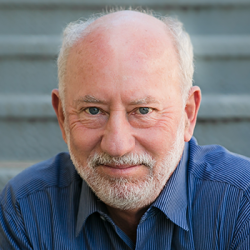On lists of 21st century competencies, there used to be 3 C’s - critical thinking, collaboration, and communication - but now there are four. Creativity, and its cousin innovation, makes most of the lists of today. (Sometimes you see more C’s, such as cross-cultural competence or citizenship, but that’s another story.) In today’s workplace and economy, it pays to be creative and innovative – and it doesn't hurt to possess these traits for life in general, either. The many books, blog posts, and online resources about the topic that we’re suddenly seeing are evidence that, both in the U.S. and around the world, cultivating this competency in young people is viewed as key to their own – and their nation’s – success.

Some people raise concerns about including creativity and innovation on a list of outcomes for students, because (a) it can't be taught; it’s an innate ability, and (b) it can’t – indeed shouldn't – be assessed, and students should not be given a grade for how creative they are. While there are valid reasons for these concerns, I’d like to offer some thoughts about how it can be done in a PBL context.
First, some clarification. Creativity is traditionally associated with the arts; we say someone like a writer, painter or musician is creative when they have original, out-of-the-box ideas or ways of doing things. But today creativity is also talked about as part of problem-solving or designing (or even just improving) a product, service, or process. Here’s how Suzie Boss, the primary author of BIE’s PBL Toolkit Series book, PBL for 21st Century Success, explains it:
Compared with creativity, innovation has a more practical feel. It’s about putting good ideas into action… When students display creativity and innovation in PBL, they are able to generate and refine solutions to complex problems or tasks.
Can creativity and innovation be taught?
It’s true that some people are just naturally more creative than others. But creativity can be nurtured in everyone (see the research by Donald Treffinger of the Center for Creative Learning among others) and all students can learn to use a process for effective innovation. In PBL, teachers can teach creativity and innovation in three ways:
Design Projects to Bring Out Creativity
Planning a project that integrates the arts is an obvious example of how you can bring out students’ creativity. Also think about how your students might create an original product or come up with solutions to a problem – the more authentic, the better, since an important part of the innovation process involves understanding your audience or end-user.
When planning a project, don't forget to consider constraints, which is another real-world factor in creative problem-solving and design thinking. Think about time, costs, materials, and of course which content standards you need to address. Decide whether the project will ask all student teams to create the same product, or different products. And finally, will the products be specified in advance or left open for students to determine?
Create a Culture that Promotes Creativity and Innovation
A workplace that encourages creativity has certain features, and a PBL classroom too can be a place where it’s OK to offer divergent ideas, ask new questions, and try, fail, and try again. Students should feel that it’s safe to take risks and not be penalized (like, say, being given a low grade for an early draft or prototype). They should be in the habit of giving and receiving critical feedback among peers.
Scaffold for Creativity and Innovation
Teachers can build student competency by teaching them to use a process for innovation. Such processes typically include steps such as understanding the purpose and audience/user; generating ideas; evaluating and selecting ideas; testing and refining ideas through a cycle of feedback and revision; developing and presenting a final product or solution. For each of these steps, students can be asked to regularly employ a variety of protocols and tools to help make them more effective.
Can creativity and innovation be assessed?
Yes, you can assess creativity and innovation, but it has to be done carefully. First, let me be clear that I don't think students should be given a grade for how creative they are. But they can and should be assessed and given feedback on how well they follow a process for innovation. And I think it is possible to assess a product (not a student) for creativity, so go ahead – if having a creative idea, product or solution was one of the explicit goals of a project (Grant Wiggins talks about this in his blog and links to an example of a rubric for creativity).
To meet the need for assessing process separately from the product, we created our Rubric for Creativity and Innovation in PBL in two parts. The first part follows the phases of a project and describes how students show creativity when they:
- Define the Creative Challenge (by asking questions such as: Who needs this, and why? What are their needs and interests?)
- Identify Sources of Information (by finding unusual ways or places to get information; by promoting divergent perspectives during discussions – which btw is a Common Core standard)
- Generate and Select Ideas (by using idea-generating techniques, evaluating ideas and selecting the best one to try, using imagination to shape ideas, and seek out and use feedback)
- Present Work to Users/Target Audience (by creating interesting presentations)
The second part of the rubric focuses on the qualities of a creative product, describing three criteria: originality, value, and style. This part we consider optional, since assessing the creativity in a piece of work raises issues of subjectivity and cultural bias; one person’s creative mash-up of music samples might be another person’s meaningless mix of sound fragments.
A final note about how we constructed our rubrics for creativity and innovation in PBL: we left the fourth column – “Above Standard” – blank. In trying to write it, we realized that it’s very hard to describe what creativity looks like when it goes beyond expectations. We found ourselves trying words like “wow factor” and “exceptionally” and “impressive” but they were just too vague and subjective. We decided it’s a case of “you know it when you see it,” so if a teacher and/or students want to write their own descriptors based on observations of extra-creative work, go for it!
Watch
Hangout with BIE: Creativity and Innovation in PBL
BIE's Editor in Chief John Larmer is joined by BIE's Director of Innovation Alfred Solis to discuss the month-long theme of Creativity and Innovation in Project Based Learning.

